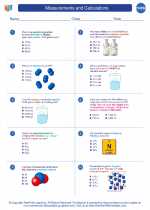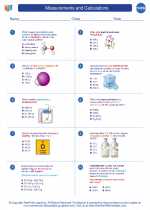Periodic Table
The periodic table is a tabular arrangement of the chemical elements, organized in order of increasing atomic number, electron configuration, and recurring chemical properties. It is a fundamental tool in the study of chemistry, providing a wealth of information about the elements and their relationships.
Structure of the Periodic Table
The periodic table is divided into periods (rows) and groups (columns). The periods represent the number of electron shells an atom of the element has, while the groups represent the number of electrons in the outermost shell, also known as the valence electrons.
Each element is represented by its chemical symbol, along with its atomic number and atomic mass. The periodic table also includes other important information such as the element's electron configuration, oxidation states, and electronegativity.
Periodic Trends
Various properties of the elements exhibit periodic trends across the periodic table. Some of the most important periodic trends include:
- Atomic radius: The size of the atom, which generally decreases from left to right across a period and increases from top to bottom within a group.
- Ionization energy: The energy required to remove an electron from an atom, which generally increases from left to right across a period and decreases from top to bottom within a group.
- Electronegativity: The ability of an atom to attract electrons in a chemical bond, which generally increases from left to right across a period and decreases from top to bottom within a group.
- Metallic character: The tendency of an element to exhibit metallic properties, which generally decreases from left to right across a period and increases from top to bottom within a group.
Study Guide
When studying the periodic table, it is important to familiarize yourself with the following key concepts:
- Understanding the organization of periods and groups.
- Memorizing the names and chemical symbols of the first 20 elements.
- Identifying the location of metals, nonmetals, and metalloids on the periodic table.
- Recognizing the trends in atomic radius, ionization energy, electronegativity, and metallic character.
- Understanding the significance of valence electrons and their relationship to an element's reactivity and chemical bonding.
Additionally, practicing with interactive periodic table tools and completing periodic table worksheets can be helpful in reinforcing your understanding of the periodic table and its properties.
By mastering the periodic table, you will have a solid foundation for understanding the behavior of elements and their compounds, as well as predicting their chemical reactivity and properties.
.◂Chemistry Worksheets and Study Guides High School. Measurements and Calculations

 Worksheet/Answer key
Worksheet/Answer key
 Worksheet/Answer key
Worksheet/Answer key
